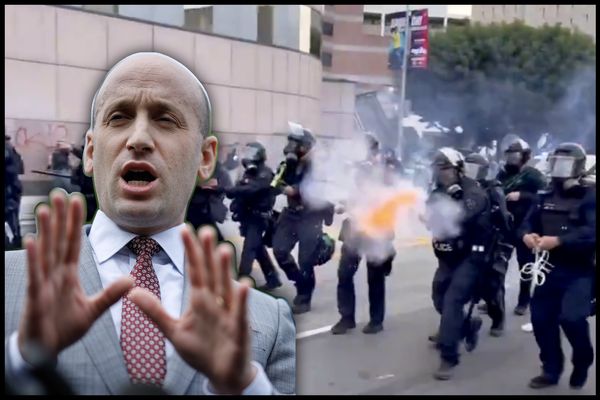
Mascots are meant to unite fans, spark school spirit, and give teams a memorable identity. But what happens when a mascot’s origins are rooted in outdated traditions or cultural insensitivity? The debate over unsettling team mascots isn’t just about sports—it’s about how communities choose to represent themselves and what values they uphold. For many, mascots are a source of pride, but for others, they can be a painful reminder of stereotypes or exclusion. As conversations about respect and representation grow louder, understanding the origins of these controversial mascots matters more than ever. Whether you’re a die-hard sports fan or just curious about the stories behind the symbols, this topic affects how we see our teams, our communities, and ourselves.
1. The Birth of Mascots: Symbols of Strength or Stereotypes?
Team mascots often began as symbols of power, bravery, or local heritage. Early teams wanted fierce animals or legendary figures to intimidate rivals and rally fans. But not all choices aged well. Some mascots, especially those depicting cultural or ethnic groups, were chosen without much thought about accuracy or respect. Over time, what started as a symbol of strength sometimes became a caricature, reinforcing stereotypes rather than celebrating real history. This shift from tradition to controversy is at the heart of today’s mascot debates, making it crucial to look at how these symbols were first chosen and why they still matter.
2. Native American Imagery: Pride or Problem?
Few topics in the mascot world are as heated as the use of Native American imagery. Teams at every level—from high schools to the pros—have used names, logos, and mascots based on Native American tribes or figures. While some argue these mascots honor indigenous people, many Native Americans and advocacy groups see them as disrespectful and harmful. Studies have shown that such mascots can negatively impact the self-esteem of Native youth and perpetuate harmful stereotypes. The ongoing push to retire these mascots is about more than political correctness; it’s about recognizing the real-world effects of these symbols and making sports more inclusive for everyone.
3. Animal Mascots: When Fierceness Crosses the Line
Animal mascots are usually seen as safe territory, but even these can stir controversy. Some teams have chosen endangered or sacred animals in certain cultures, sparking debates about respect and conservation. For example, using a bald eagle or a tiger might seem harmless, but it can raise questions about wildlife protection and cultural significance. Teams can avoid controversy by researching the meaning behind their chosen animal and ensuring it’s used in a way that educates and respects both the animal and any cultures connected to it. This approach helps keep the focus on team spirit without crossing into uncomfortable territory.
4. Regional Stereotypes: When Local Pride Turns Problematic
Many mascots are inspired by local history or industry—think miners, cowboys, or lumberjacks. While these can foster community pride, they sometimes rely on outdated or exaggerated stereotypes. For instance, a mascot based on a “hillbilly” or “redneck” image might seem funny to some but offensive to others. These mascots can unintentionally reinforce negative perceptions about a region or its people. Teams looking to update their image should consider whether their mascot truly reflects the diversity and values of their community today, rather than clinging to a narrow or outdated view of local identity.
5. The Role of Fans: Tradition vs. Change
Fans are often the most passionate defenders of traditional mascots, seeing them as a vital part of team history. But as society changes, so do expectations about what’s appropriate. The debate over unsettling team mascots often pits nostalgia against the need for progress. Some fans worry that changing a mascot erases history, while others argue that it’s a chance to create new traditions that everyone can celebrate. Open dialogue between teams, fans, and affected communities is key to finding solutions that honor the past without perpetuating harm. Teams that listen and adapt can turn controversy into an opportunity for growth and unity.
6. Practical Steps for Teams: Moving Forward with Respect
If your team is facing controversy over its mascot, there are practical steps to address the issue. Start by listening to those who feel harmed or excluded by the mascot. Research the history and meaning behind the symbol, and consult with cultural experts or advocacy groups. Consider holding community forums to gather input and build consensus. If a change is needed, involve fans in the process of choosing a new mascot that reflects shared values. This approach not only resolves controversy but also strengthens community bonds and sets a positive example for others.
Rethinking Mascots: A Chance for Positive Change
The origins of unsettling team mascots reveal how symbols can both unite and divide. By understanding where these mascots come from and why they matter, teams and fans have a unique opportunity to shape a more respectful and inclusive future. Changing a mascot isn’t about erasing history—it’s about writing a new chapter that everyone can be proud of. As more teams rethink their symbols, the conversation shifts from controversy to collaboration, proving that sports can build stronger, more welcoming communities.
What’s your take on unsettling team mascots? Have you seen a mascot change bring your community together, or spark new debates? Share your thoughts in the comments below!
Read More
Stupid Dude and the Dryer of Death
The post From Tradition to Controversy: The Origins of Unsettling Team Mascots appeared first on Clever Dude Personal Finance & Money.







